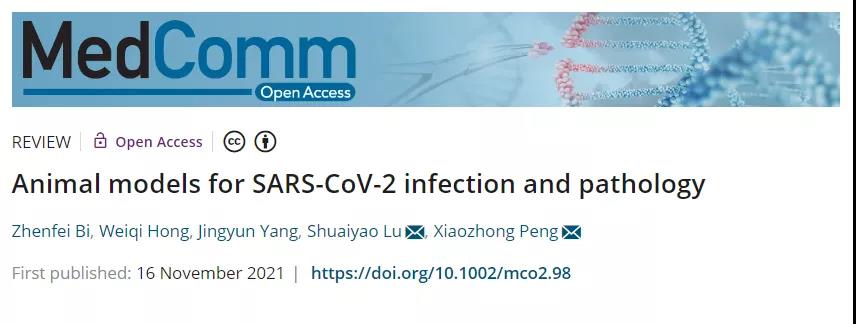MedComm | Animal models for SARS-CoV-2 infection and pathology

Open the phone and scan
Severe acute respiratory syndrome coronavirus 2 (SARS-CoV-2) is the etiology of coronavirus disease 2019 (COVID-19) pandemic. Current variants including Alpha, Beta, Gamma, Delta, and Lambda increase the capacity of infection and transmission of SARS-CoV-2, which might disable the in-used therapies and vaccines. The COVID-19 has now put an enormous strain on health care system all over the world. Therefore, the development of animal models that can capture characteristics and immune responses observed in COVID-19 patients is urgently needed. Appropriate models could accelerate the testing of therapeutic drugs and vaccines against SARS-CoV-2. In this review, we aim to summarize the current animal models for SARS-CoV-2 infection, including mice, hamsters, nonhuman primates, and ferrets, and discuss the details of transmission, pathology, and immunology induced by SARS-CoV-2 in these animal models. We hope this could throw light to the increased usefulness in fundamental studies of COVID-19 and the preclinical analysis of vaccines and therapeutic agents.

There are a variety of animal models that have been developed to demonstrate the transmission, pathogenesis, and immunology induced by SARS-CoV-2, and to evaluate the immunomodulatory and antiviral drugs and vaccines against COVID-19. The most important criterion for animal models is to well recapitulate the features that observed in COVID-19 patients. Genetically modified mice that express hACE2, especially the K18-hACE2 and CAG-hACE2 transgenic mice which characterize the severe disease of COVID-19 patients with ARDS or SIRS, and Syrian hamsters are widely used as rapid models. These animal models are easy to obtain, and have good operability and reproductivity. However, some limitations must be highlighted, such as the different expression of hACE2 among organs in hACE2 transgenic mice, ectopically expressed hACE2 via adenoviral/adenoviral-associated vectors that may change the tissue or cellular tropism of the virus, the occurrence of key mutations in immunogen such as RBD domain that may lead to the noneffective neutralizations for the mouse-adapted virus, and the minimal disease in infected naive hamsters. Moreover, NHPs have similar phylogeny and immunology to humans and are widely used for evaluating the protective efficacy of vaccines and drugs; the receptors for SRAS-CoV-2 shows different expression in upper and lower respiratory tract, which affects the viral transmission and infection. The association between the expression manner of ACE2 receptors and disease phenotypes need to be considered. Further studies should be required to standardize the challenge stocks, route, and method of viral inoculation, which may lead to the various of diversities in clinical feature, pathology, immunology, and caused mortality.

Animal models that recapitulate characteristics and immune responses observed in COVID-19 patients are urgently needed
Article Access: https://doi.org/10.1002/mco2.98
Website for MedComm: https://onlinelibrary.wiley.com/journal/26882663
Looking forward to your contributions.


